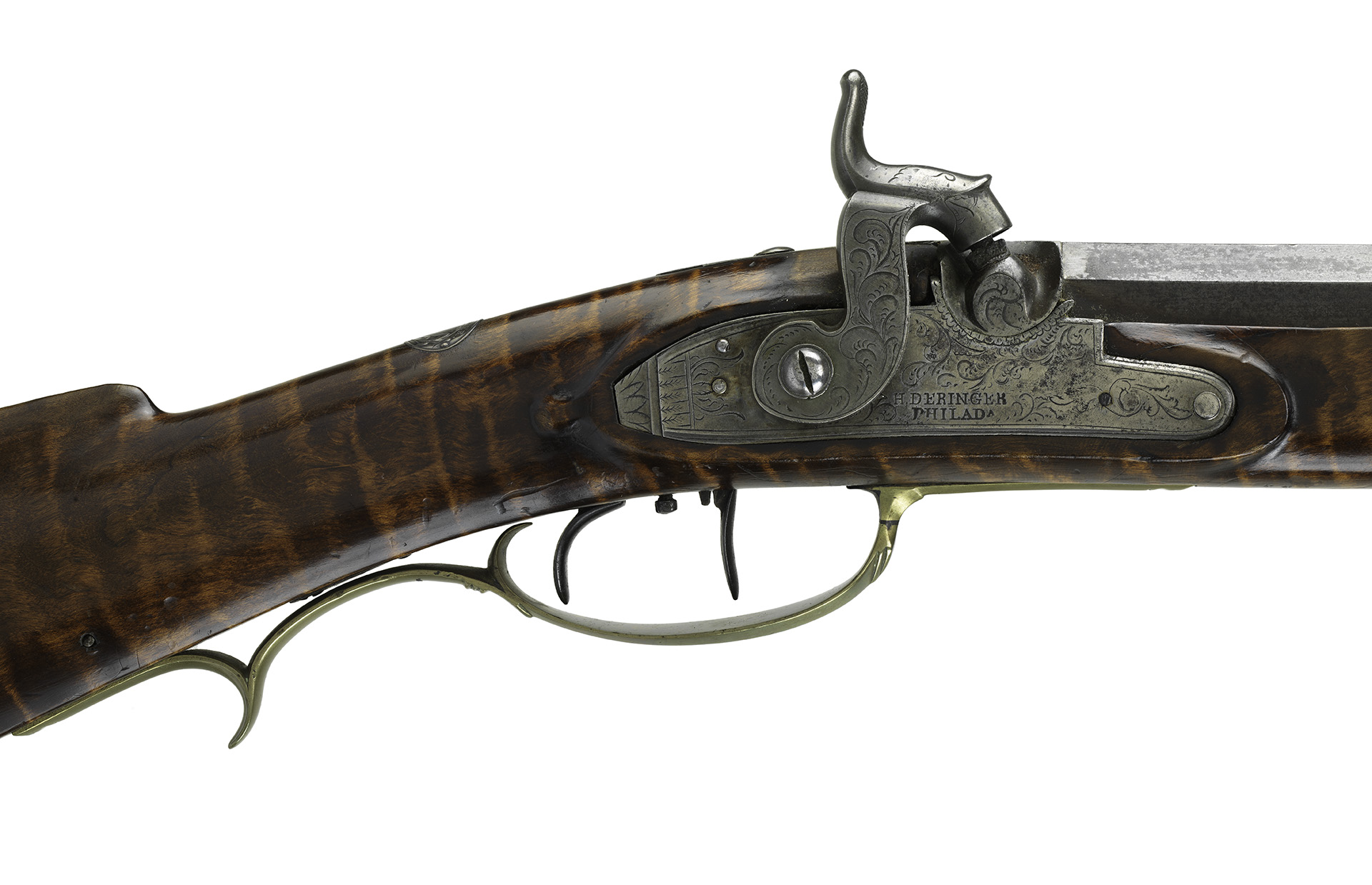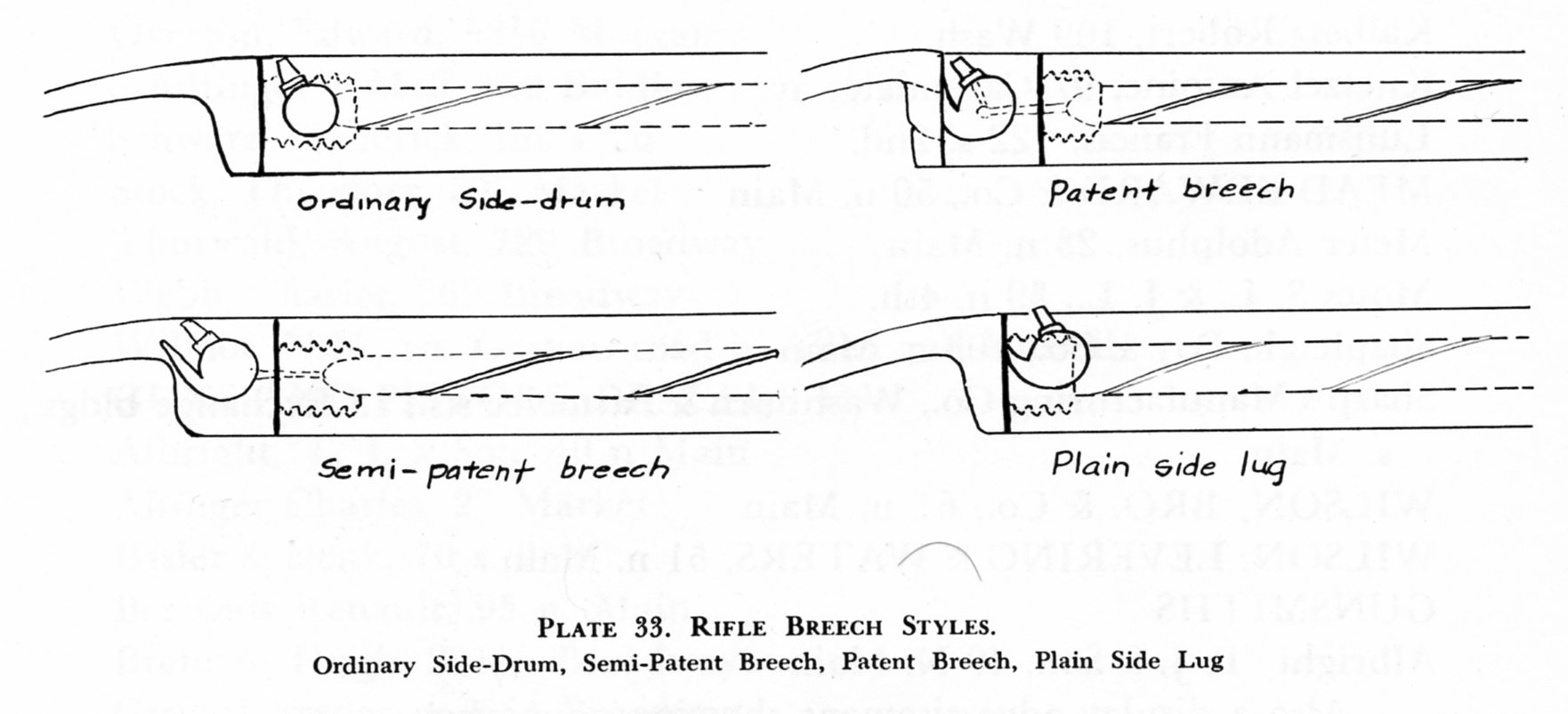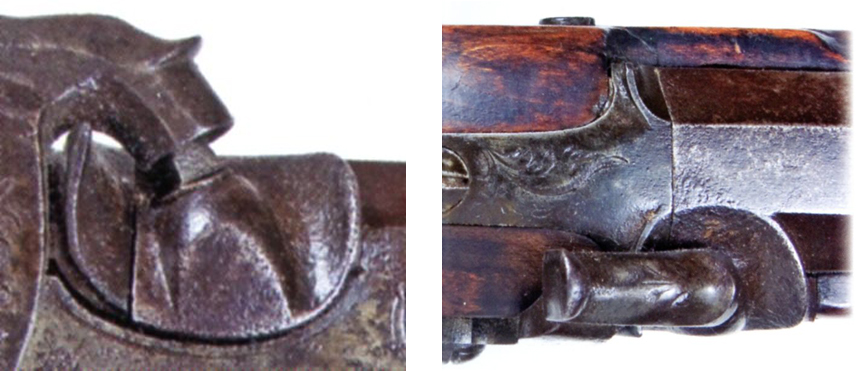I have always been under the impression that originally Hawken rifles were offered in flintlock early on and later transitioned to percussion but after reading a book I found in the back of my gun library given to me by, I know not who some time ago, it seemed to imply that Hawkens were all percussion guns from the get go. The book is called "Fifteen Years in the Hawken Lode" by John D. Baird.
What is the truth on this?
I'm not familiar with the passage in the book you mention that "seemed to imply that Hawkens were all percussion guns from the get go." I would need to understand the context in which these implications were made.
After Baird published his first book,
Hawken Rifle: The Mountain Man's Choice, and second book,
Fifteen Years in the Hawken Lode, he was on the lookout for a flintlock J&S Hawken rifle. He published a couple articles in
Buckskin Report about possible early Hawken rifles that were flint (May 1975, pg. 16 and October 1979, pg. 26), so at that time, he was thinking there were likely flint Hawken rifles made.
As
Grenadier1758 said, there are a couple eastern made flintlock rifles likely made by Jake (with father Christian) and Sam (singly), but these were built in either Hagerstown, MD or Xenia, Ohio and not in St. Louis. Further, there are a couple of "J&S Hawken" marked rifles that might have been built as flint and later converted to percussion, but these have not been authenticated and are full stocks, not the half stock rifle we normally associate with the name Hawken.
A conclusion one could draw, and maybe this is what Baird was implying, is that J&S utilized the percussion system in their first half stock rifles. The logic for this is that they realized they could not fully compete on price with the full stock flintlock rifles coming from places like Lancaster and Philadelphia, PA. They needed to differentiate their product in some way. A half stock percussion rifle would certainly be different than a Lancaster pattern full stock flintlock rifle.
This has some timing implications. In both his two books, Baird included a timeline or "Chronological Record Of Events Connected With Hawken Shop". In this timeline, he includes "1813 Joshua Shaw develops percussion cap" and "1814 Shaw attempts to patent his invention" along with dates that Jacob Hawken arrived in St. Louis and date when he opened gun shop as well as date when Samuel Hawken arrived in St. Louis. It's interesting that he included the seemingly unrelated info on Joshua Shaw unless he meant to imply a meaningful relation to Shaw's percussion cap and the Hawken's early time in St. Louis.
The information he presented on Shaw and his percussion cap is incomplete, though. Shaw did claim to have developed a metal percussion cap around 1814 or 1815 while still in England, but it's speculative that he tried to patent it at that time. Others in England were experimenting with the percussion system since the Rev. Alexander John Forsyth of Scotland patented his system in 1807 including Joseph Egg, who may have also developed a metal percussion cap at the same time as Shaw. Forsyth aggressively protected his patent in the English courts until it expired in 1821. After that date, several top gun makers in England started making guns utilizing percussion caps. Percussion sporting guns were pretty common by 1825 in England and almost universal by 1830.
In the meantime, Joshua Shaw had emigrated to America in 1817. He apparently continued to experiment with percussion caps and filed for a US patent on a copper percussion cap in 1822.
As in England, some American gun makers were quick to incorporate the percussion cap in their arms. Henry Deringer was making percussion pistols as early as 1826 (
Henry Deringer Pistols from 1826 to 1870 by L. D. Eberhart, pg. 10). George Shumway in
Pennesylvania Longrifles of Note shows a Henry Deringer percussion rifle that he says was made in 1829.
Charles Hanson, Jr. found advertisements for percussion arms and percussion caps in St. Louis papers as early as 1830. There could have been some percussion guns in St. Louis a year or two earlier than that for the hardware and guns stores to start supplying caps and start advertising same in 1830.
This rather long winded explanation about the development of percussion caps and use on firearms is meant to make the point that if the Hawken brothers did develop the percussion half stock "Mountain" rifle to differentiate themselves in the St. Louis market, it likely happened right at the end of the 1820s at the earliest. Before that, they were likely making flintlock rifles.
The earliest written record of a mountain man using a Hawken rifle is 1829 (previously Hanson had reported it was 1831). This record was uncovered by Jack Tykal who was researching the activities of Etienne Provost for a book he was working on. Tykal first published this information in the
The Museum of the Fur Trade Quarterly, Vol. 19. No. 2, Summer of 1983 in his article titled “Etienne Provost and the Hawken Rifle”.
Charles E. Hanson Jr. editor's note to the article said:
Mr. Tykal is to be congratulated for the research outlined in this article. As far as we know, this is the earliest reference to the sale of a Hawken rifle to a mountain man and the invoice of 1834 is the only record of Hawken rifles being taken to a rendezvous for sale.
Mr. Tykal said:
The first documented reference connecting Provost and the Hawken occurs in 1829 in a letter from Kenneth McKenzie, commanding at Fort Floyd (later to become Fort Union), to Pierre Chouteau, Jr. In what amounts to a post-script to that letter, dated January 2, 1829, McKenzie requests that Chouteau, “Please add to the spring order two Rifles similar in all respect to the one made by Hawkins for Provost.” In 1827 B Pratte & Co. had taken over the Columbia Fur Company, which henceforth was called the Upper Missouri Outfit, and had sent McKenzie to oversee the company’s post at the confluence of the Yellowstone and Missouri rivers. Provost had been sent out by the company probably in 1828—although possibly in 1827—to contact the trappers in the mountains to encourage their trading at the company post. In the winter season of 1828-29 he trapped and traded among the Crow Indians, returning to St. Louis in July of 1829.
Jack Tykal published
Etienne Provost: Man of the Mountains in 1989. In it he states that Provost spent the latter half of 1827 in St. Louis then headed up the Missouri early in 1828 as an employee of McKenzie’s Upper Missouri Outfit. This would have given Provost ample opportunity to purchase the Hawken rifle in St. Louis prior to going up the Missouri.
Provost may have attended the 1828 Rendezvous at Bear Lake as part of his mission to encourage trappers to trade at the new fort. Provost then traveled to Crow country and spent the fall and winter of 1828/29 trapping with the Crows. He must have visited Fort Union that fall or winter for Kenneth McKenzie to have seen him with his Hawken rifle. In the spring of 1829, he started down river to St. Louis with his furs. He arrived at Fort Tecumseh on July 7th and was in St. Louis by late July.
Mr. Tykal’s research also uncovered that as part of a trapping and trading partnership agreement between Provost and the American Fur Company in August 1829, that Provost purchased an outfit including horses, tomahawks, beaver traps, knives, blankets and the sundry other necessities for such a venture and “2 rifles, Hawkins & Co., $50”.
Apparently, Etienne purchased one Hawken rifle in 1827 and at least two more in 1829. It’s not known if the latter two were for him or the two or three men he hired to accompany him on the 1829/30 venture. Provost again spent the winter hunt with the Crows and traveled back to St. Louis that summer to deliver his furs per his agreement with the AFC.
Based on the discussion above about the development and timing of the percussion cap system, the rifle that Etienne Provost acquired in 1827 would have been a flintlock. The two Hawken rifles he purchased in 1929 were also likely flintlocks and based on their price were almost assuredly full stock rifles. No price info is available on the 1827 rifle so can't say whether it was full stock or not.
Again, I'm not sure what you read in
Fifteen Years in the Hawken Lode that "seemed to imply that Hawkens were all percussion guns from the get go." The only basis for Baird to think that was that he hadn't seen any surviving Hawken rifles that appeared to have been made with flintlocks at the time he published the book, but to my read, he seemed to expect to find one someday.













